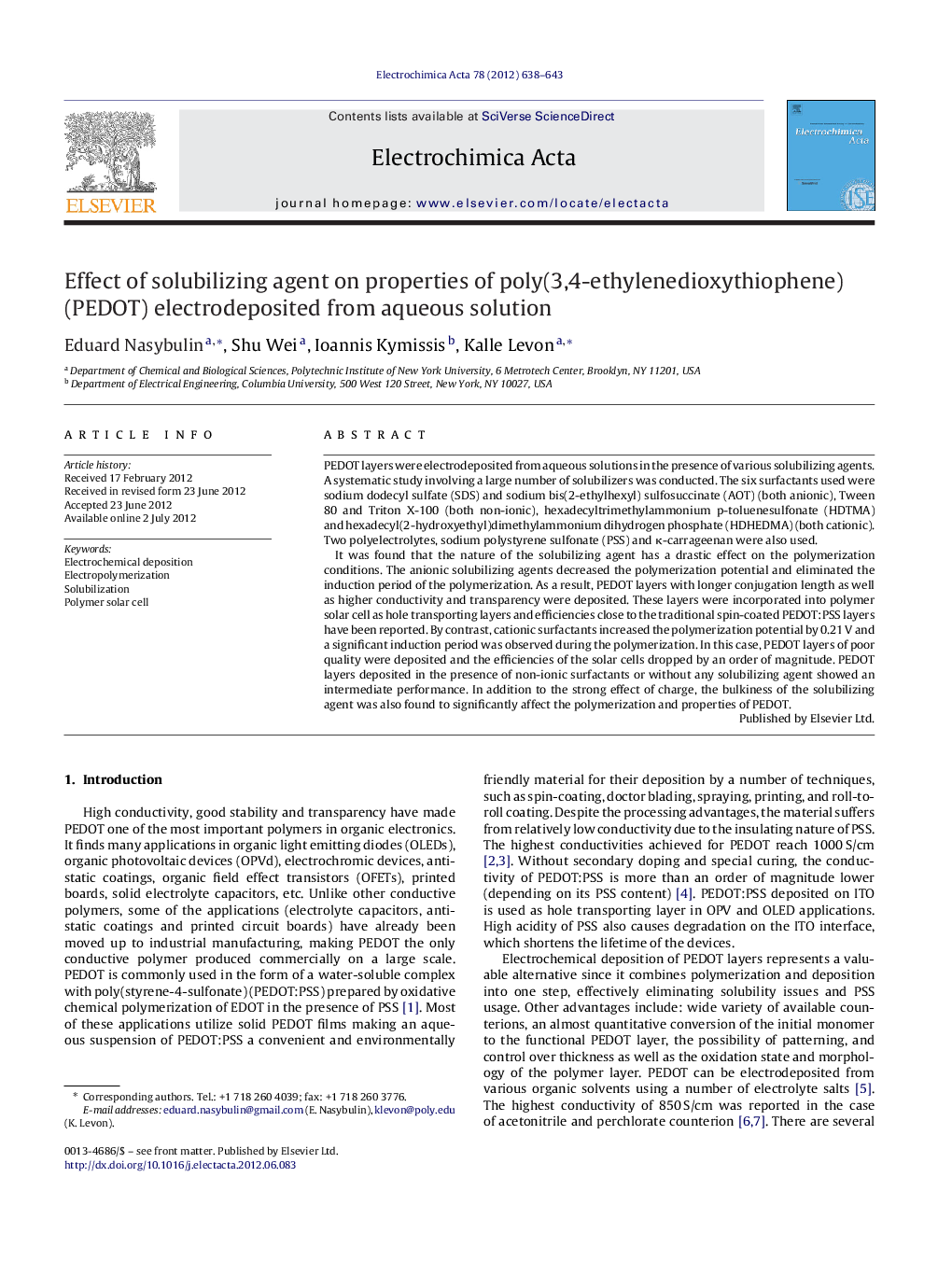| Article ID | Journal | Published Year | Pages | File Type |
|---|---|---|---|---|
| 188365 | Electrochimica Acta | 2012 | 6 Pages |
PEDOT layers were electrodeposited from aqueous solutions in the presence of various solubilizing agents. A systematic study involving a large number of solubilizers was conducted. The six surfactants used were sodium dodecyl sulfate (SDS) and sodium bis(2-ethylhexyl) sulfosuccinate (AOT) (both anionic), Tween 80 and Triton X-100 (both non-ionic), hexadecyltrimethylammonium p-toluenesulfonate (HDTMA) and hexadecyl(2-hydroxyethyl)dimethylammonium dihydrogen phosphate (HDHEDMA) (both cationic). Two polyelectrolytes, sodium polystyrene sulfonate (PSS) and κ-carrageenan were also used.It was found that the nature of the solubilizing agent has a drastic effect on the polymerization conditions. The anionic solubilizing agents decreased the polymerization potential and eliminated the induction period of the polymerization. As a result, PEDOT layers with longer conjugation length as well as higher conductivity and transparency were deposited. These layers were incorporated into polymer solar cell as hole transporting layers and efficiencies close to the traditional spin-coated PEDOT:PSS layers have been reported. By contrast, cationic surfactants increased the polymerization potential by 0.21 V and a significant induction period was observed during the polymerization. In this case, PEDOT layers of poor quality were deposited and the efficiencies of the solar cells dropped by an order of magnitude. PEDOT layers deposited in the presence of non-ionic surfactants or without any solubilizing agent showed an intermediate performance. In addition to the strong effect of charge, the bulkiness of the solubilizing agent was also found to significantly affect the polymerization and properties of PEDOT.
